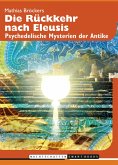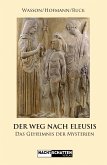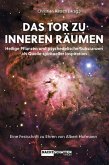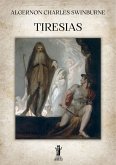Algernon Charles Swinburne (1837-1909) was a British poet, writer and playwright of the Victorian era. Active in the aesthetic circle, romantic and then decadent, he met Oscar Wilde and other famous intellectuals of the same environment, attending the Pre-Raphaelites and becoming a friend of the poet, artist and initiate Dante Gabriel Rossetti. Eccentric personality, with a strong taste for artistic provocation, inspired by writers such as De Sade, Shelley and Baudelaire, his poetry was controversial and characterized by the cult of paganism. From 1903 to 1909 he was nominated for the Nobel Prize for Literature. With Robert Browning, Alfred Tennyson and William Butler Yeats, he is considered one of the most representative poets of Victorian literature. Swinburne's literary output is vast and includes poems, plays, novels, short stories and essays on literary criticism. The poem At Eleusis, which today we re-propose to modern readers, was included in 1866 by Swinburne in one of his finest collections of poetry, Poems and Ballads, dedicated to its friend Edward Burne Jones, the British artist and designer closely associated with the later phase of the Pre-Raphaelite movement. Poems and Ballads is a collection with an exquisitely mythological and pantheistic spirit. It includes masterpieces such as Laus Veneris, Phædra, Anactoria, Hermaphroditus, and the famous Hymn to Proserpine. But it is At Eleusis, the poem dedicated to the holiest place on Earth, the crowning glory of this collection. Eleusis, the place where ended the events and drama of the two Goddesses, the Mother and the Daughter, and where a new era for mankind began. Swinburne celebrates Demeter and Kore-Persephone, emblems of the Sacred Feminine, the Goddesses who brought to all humanity a message of redemption and hope of immortality, with the establishment of the Eleusinian Mysteries.
Dieser Download kann aus rechtlichen Gründen nur mit Rechnungsadresse in A, B, BG, CY, CZ, D, DK, EW, E, FIN, F, GR, HR, H, IRL, I, LT, L, LR, M, NL, PL, P, R, S, SLO, SK ausgeliefert werden.









